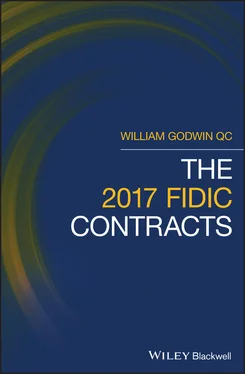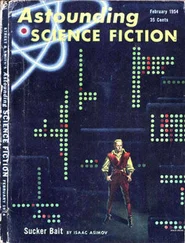Another key aim in preparing the second editions was to improve project management and reflect international best practice. New procedures designed to promote this aim include requiring the Contractor to prepare and implement a Quality Management System to show compliance with the Contract requirements (clause 4.9.1) and a Compliance Verification System to show that the design, materials, workmanship and certain other matters all comply (clause 4.9.2). There is in general much greater emphasis on dispute avoidance, including an enhanced role for the DAAB in this respect, and promoting cooperation between the parties during the project.
1.2 The Rainbow Suite: The Main Features of the 1999 Red, Yellow and Silver Books
The origins of the 1999 Red Book go back to 1957, when a first edition based on the English civil engineering ‘ACE’ (Association of Consulting Engineers) form was introduced. The ACE form was in turn an international version of the UK Institution of Civil Engineers (ICE) form, fourth edition, the main UK domestic engineering contract of the time.
The Red Book's UK origins are not just of historical interest since important features of the form, and indeed of all three 1999 Books, are attributable to them. Expressions such as ‘fitness for purpose’ and ‘consequential loss’, for example, are common law expressions used in the three Books. More generally, the 1999 contracts are drafted in English. In the notes to the 1999 and 2017 editions the English language versions are stated to be the official and authentic texts.
The Red Book underwent several changes since its introduction in 1957, culminating in the very widely used 1987 fourth edition. It was this edition to which the FIDIC task group mainly had regard when preparing the 1999 edition of the Red Book, which we know as the ‘first edition’; 1999 was a watershed year for FIDIC, when the three main forms constituting the ‘rainbow suite’ were simultaneously issued. Each of the 1999 contracts had the same simplified 20‐clause format, with many of the same topics dealt with by clauses with the same numbering. These features, which all had in common, led to their designation as ‘first editions’: they were the first editions of a new, fundamentally overhauled and restructured suite of contracts.
Employer design
The main distinguishing feature of the 1999 Red Book is that the Employer is responsible for all or most of the design of the works. The title of the 1999 edition (and the 2017) is Conditions of Contract for Construction, for Building and Engineering Works designed by the Employe r. That is not to say the Contractor is never responsible for any design, but the form is intended for use where the Employer or those acting on his behalf are responsible for all or most of the design. The Contractor's basic responsibility under the Red Book forms is to execute the works in accordance with designs prepared by or on behalf of the Employer.
Re‐measurement
The second main distinguishing feature of the 1999 Red Book is that it is a re‐measurement contract. The Contractor's entitlement is to be paid in accordance with the quantity of work he executes under the Contract applying the relevant rates, typically stated in the bills of quantities. This is by contrast with the other two members of the rainbow suite, the Yellow and Silver Books, where the Contractor's basic entitlement is to be paid a fixed price lump sum subject to adjustments or additions for such things as variations.
The Engineer
The third feature of the Red Book, which it shares with the Yellow Book, is that an important role is assigned to the Engineer. Under both Books in both the 1999 and 2017 editions the Employer is obliged to appoint an Engineer to administer the Contract. The Engineer is not a party to the Contract, but he exercises a range of important functions which control the project and affect the rights of the two parties, the Employer and Contractor. Broadly speaking, those functions involve administering the Contract, by for example certifying interim payments due to the Contractor, and determining certain matters affecting the parties' entitlements under the Contract, such as the Contractor's entitlement to an extension of time or an additional payment.
This latter adjudicative function in particular highlights the dual role Engineers perform of being at once the agents of the Employer for various purposes and determiners of the parties' entitlements. Engineers' decisions about such matters as extensions of time or additional payments are not in general final under the FIDIC forms, although, as we shall see, if time limits are breached an Engineer's determination might become final; but the importance of ensuring that as far as possible the Engineer, in making his determinations, should do so in a disinterested and fair way as between the parties has led to express provision in both the 1999 and 2017 editions of the Red and Yellow forms for the Engineer to act fairly, in accordance with the Contract and taking into account all relevant circumstances (clause 3.5/1999 and 3.7/2017) with, in the 2017 editions of the two Books, the express additional requirement that the Engineer should act neutrally between the parties and not be deemed to act for the Employer (clause 3.7 of the 2017 editions). The 2017 editions also provide (clause 3.2) that there should be no requirement for the Engineer to obtain the Employer's consent before exercising his authority under clause 3.7.
The role of the Engineer in the 2017 editions of the Red and Yellow Books is another legacy of the UK origins of the FIDIC forms. The UK domestic engineering forms historically assigned an important role to the Engineer, broadly in line with the role adopted by the Engineer in the FIDIC Books; and historically the Engineer was treated as a professional person to be accorded great respect, and who was expected by both parties to act neutrally and fairly in carrying out all his functions. This traditional status of the Engineer has for some time been eroded, and in many cases in projects internationally he has come to be regarded as no more than the mouthpiece of the Employer. For that reason the 2017 editions have sought to reinforce the expected neutrality of the Engineer by the new provisions in clauses 3.2 and 3.7.
Risk allocation
The fourth feature of the 1999 Red Book, which it also shares with the 1999 Yellow Book, is that the allocation of risk between Contractor and Employer is intended to be an even handed or fair one, having regard to each party's ability to manage and control risk. Thus, for example, under clause 4.12 of both Books the Contractor may claim both additional time and money if he encounters physical conditions which were unforeseeable in the sense that they were not reasonably foreseeable by an experienced contractor at the date of tender, or the Base Date 1 in the 2017 editions. 2 The Contract allocates risk by striking a balance between the need to protect the Employer from the time and cost consequences of physical conditions which an experienced Contractor ought to have foreseen, and the need to protect responsible contractors from the time and cost consequences of conditions which they cannot reasonably have been expected to foresee at tender stage.
The reputation which FIDIC has traditionally enjoyed of fairly allocating risk between the parties largely derives from this approach, reflected not merely in the 1999 edition of the Red Book but in its predecessors and in the Yellow Book (to which we turn below) and its forebears; and the same can be said of the 2017 editions of the two Books.
The scope for claims under the Red and Yellow Books in both editions is considerable by comparison with the third member of the 1999 rainbow suite, the Silver Book, considered in Section 1.2.3below.
Читать дальше












